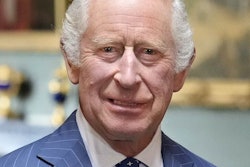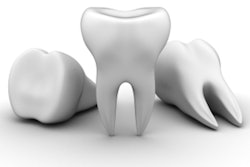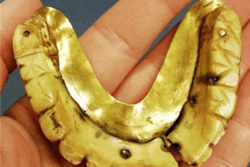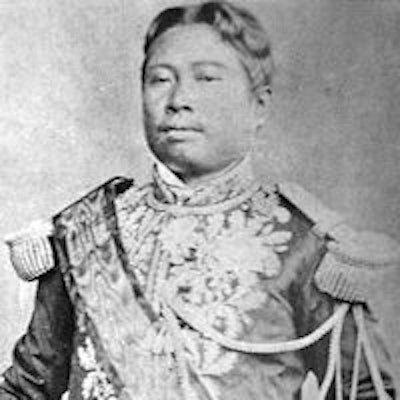
In 1901, Dr. Paul T. Carrington traveled 1,200 miles by steamboat from Bangkok to Phnom Penh following an urgent plea from Cambodian King Noradom I who was "suffering immensely from aching molars." The trip took the 25-year-old dentist five days.
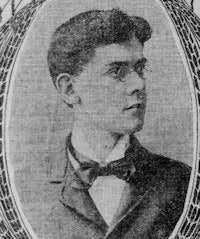 Dr. Paul T. Carrington.
Dr. Paul T. Carrington.
Dr. Carrington had graduated from the University of California Dental College in 1897 and was practicing dentistry in Bangkok, Siam (now Thailand), where he had been born and raised by his Presbyterian missionary parents. His father, Rev. John Carrington, had gained worldwide fame for transcribing the Bible into Siamese. Dr. Carrington's patients included the ruling family of Siam, who were made famous in the 1944 novel Anna and the King of Siam, based on the memoirs of English governess Anna Leonowens and which later inspired the Broadway play and Hollywood movie "The King and I."
When Dr. Carrington arrived at the king's palace, he found "his majesty's household in a state of great agitation." A London Times article of the era describes the palace as "a rambling pile of disjointed buildings of different shapes, scattered over a large enclosure, surrounded by a wall of brick and plaster." The king had a harem of 800 wives who had borne him 56 children.
Dr. Carrington found the king "irritable" and his servants "fearful of his wrath." Before the young American dentist arrived, French and Chinese dentists "had failed in their attempts to supply him with imitation teeth." One newspaper article revealed the French dentist had fitted him with false teeth that were held together with "a lot of springs," and when he talked, they either "bounded out of his mouth" or sometimes locked up and "held his jaws so he could not close them." The Chinese dentures were made of ivory from elephant tusks. They "wobbled so much that they gave the king a lantern-jawed aspect."
Apparently neither the French nor Chinese dentists had dealt with the king's underlying problem of diseased teeth.
“The few [teeth] that were left he drilled and filled with gold and the vacant places he supplied with false molars and incisors.”
In desperation, King Noradom, whose head "was tied up in a poultice to reduce swelling" had summoned Dr. Carrington, whose "feats of painless extraction" he had read about in Bangkok newspapers. The king himself had been educated in Bangkok. After his examination, Dr. Carrington immediately extracted the king's "aching teeth." The remaining were "drilled and filled with gold and the vacant places" were "supplied with [two sets of] false molars and incisors"-- one black and the other white. The king wore the white dentures when "in the company of white people, but when among his own race" he inserted the black ones.
The Cambodian people, along with natives of the tropical Pacific, Asia, and parts of East Africa, chew the betel nut -- a kind of national addiction of the time. It acts as a mild stimulant like coffee, although its use has declined somewhat over the years in urban areas. Over time, the nut (Areca catechu) dyes teeth black and destroys gums. One 20th century newspaper article claimed half the population of Cambodia was "toothless before [they] were 30 years old."
Anna Leonowens, the governess to the king of Siam's children, observed that within the king's harem: "nearly all were young ... [and] ... most would be positively attractive but for their ingeniously ugly mode [of] blackening the teeth."
Another painful custom of the time among Cambodians was to shorten teeth. This was accomplished by placing "a small block of wood [which was used] as a bite block." The native dentist then proceeded with a "coarse mechanic's file to shorten the anterior teeth." If the tooth proved to be too hard for the file, a saw would be used "with painful destruction of the soft parts." The entire process took about two hours.
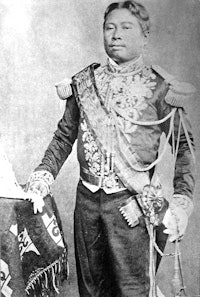 King Noradom I (1834-1904).
King Noradom I (1834-1904).
Dr. Carrington remained at the palace for two months. When he departed, newspapers reported, the king "wept on the doctor's neck" at a banquet thrown in his honor. He was also given a badge with the king's emblem on it, a gold cigar holder, and was thanked "effusively."
He remained a member of the king's staff and was under contract to travel back to the Cambodian capital "whenever his majesty's teeth began to ache [too much]."
Dr. Carrington returned to the U.S. around 1910 and was appointed curator of the University of California Dental Museum. He also maintained private practices in Berkeley, Oakland, and Gustine, CA. That same year he led a program to treat poor children in the Oakland-Berkeley area and married Clara Kasky, a graduate of the University of California, Berkeley and a concert pianist. The couple had two children. Dr. Carrington died circa 1927 at the age of 52.
King Noradom was not the only monarch of the era who relied on American dentists. At the turn of the 20th century, American dentistry was way ahead of other dental health systems worldwide. A 1911 New York Times article stated in the mid to late 1800s "dentistry was in a crude state, and Europe was far behind America in its advancement."
Some of the other prominent American dentists who served the world's royalty include Dr. Alonzo Sylvester, the dentist to Kaiser Wilhelm II of Germany; Dr. H.V. Wallison, who serviced Czar Nicholas II of Russia; and Dr. E.W. Thomas, who served Austria-Hungarian Emperor Franz Joseph and was reported to know "the emperor better than any of his ministers."
In Madrid, Dr. Florestan Aguilar, Spanish by birth but educated at the Philadelphia Dental College, serviced the needs of the Spanish court, and Dr. N.S. Jenkins served the kings of both Saxony (a German state) and Savoy (now a region of France).
By far the most famous American dentist to the kings was Dr. John Henry Evans who consulted with King Dom Pedro of Portugal (and Brazil), Czarina Alexandra II, Ottoman Sultan Abdul Hamid, and Pope Pius IX. His most prominent patient was the French Emperor Napoleon III. Dr. Evans was instrumental in assisting the emperor's wife, Empress Eugénie, to escape France when her husband was deposed at the end of the Franco-Prussian war, but his patients were not played by Yule Brynner and Deborah Kerr.
Daniel Demers is a semiretired businessman whose hobby is researching and writing about 19th and 20th century historical events and personalities. He holds a bachelor's degree in history from George Washington University and a master's degree in business from Chapman University. You can review his other published works at www.danieldemers.com.
References
Books
Dow LS. Anna Leonowens: A Life Beyond the King and I. Nova Scotia, Canada: Pottersfield Press; 1991.
Landon M. Anna and the King of Siam. London, U.K.: Trubner & Co.; 1870.
Newspaper/journal articles
Clad in classic cap and gown. San Francisco Call. June 19, 1896: 18.
College notes: College of Dentistry, University of California. Pacific Dental Gazette, January 1910: 120. Accessed December 4, 2013.
College of Dentistry Announcement for 1910-1911. University of California Bulletin. April 1910; 3(7):41.
A curious country in the East and its queer old potentate. London Times. May 25, 1896.
Dr. Thomas W. Evans dead. New York Times. November 15, 1897.
Kings and emperors like their American dentists to whom they confide many of the royal secrets. San Francisco Call, November 15, 1903: 1.
Makes a hit with king of Cambodia. San Francisco Call. November 16, 1901: 13.
Mother follows victim of air crash in death. Oakland Tribune. March 29, 1967: 7.
Old California preacher dead. San Francisco Chronicle. October 16, 1912.
To care for teeth of school children. San Francisco Chronicle. February 4, 1910.
Yankee dentist figured in intrigues of court of France. Princeton Union. March 9, 1911: 7.
Websites
Areca nut. Wikipedia website. https://en.wikipedia.org/wiki/Areca_nut. Accessed December 5, 2013.
Cambodia. Wikipedia website. https://en.wikipedia.org/wiki/Cambodia. Accessed December 6, 2013.
History of Thailand. Wikipedia website. https://en.wikipedia.org/wiki/History_of_Thailand. Accessed December 6, 2013.
Norodom of Cambodia. Wikipedia website. https://en.wikipedia.org/wiki/Norodom_of_Cambodia. Accessed December 4, 2013.
Email correspondence
Dennis Brazil, mayor of Gustine, CA, December 6, 2013.
David Hand, archivist, University of California, San Francisco, December 5, 2013.
Ron Heckart, Oakland History Room, Oakland Public Library, December 21, 2013.
Margaret Hughes, University of California, San Francisco Library, December 5, 2013.
Kim San, December 7, 2013.




